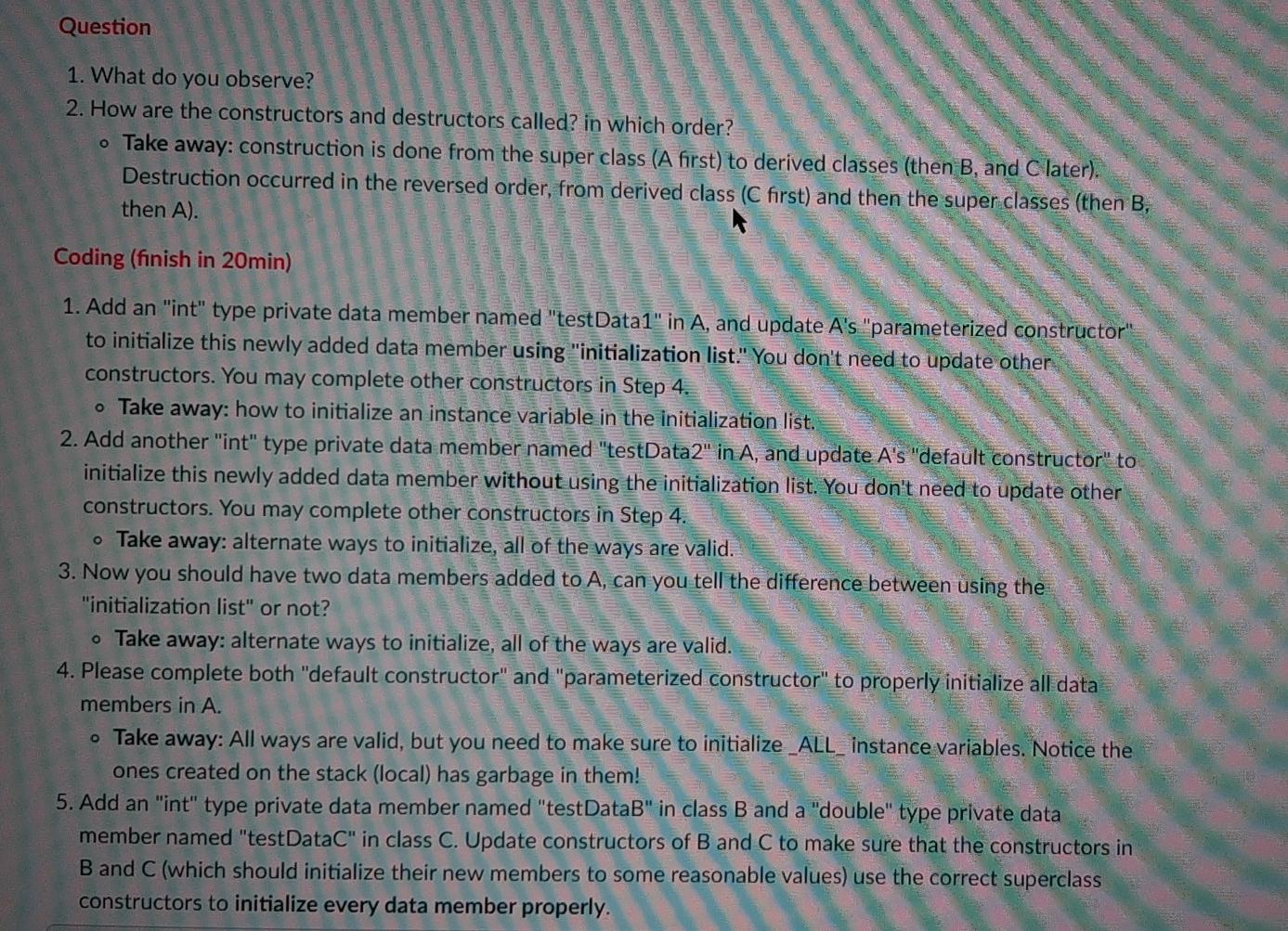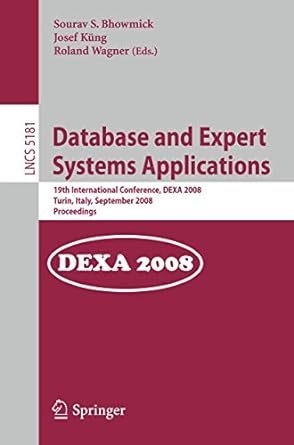Question
I need help ASAP, code in C++ a.cpp #include A.h #include using namespace std; A::A() { n = unnamed A; cout A::A(string name) : n(name)
I need help ASAP, code in C++

a.cpp
#include "A.h" #include
using namespace std;
A::A() { n = "unnamed A"; cout
A::A(string name) : n(name) { cout
A::~A() { cout
void A::setN(const char* s) { n = s; }
string A::getN(void) const { return n; }
a.h
#ifndef A_H #define A_H
#include
class A { public: A(); A(string name); ~A(); void setN(const char* s); string getN() const; private: string n; };
#endif
b.cpp
#include "B.h" #include
using namespace std;
B::B() { setN("unnamed B"); cout
B::B(string name) : A(name) { cout
B::~B() { cout
b.h
#ifndef B_H #define B_H #include "A.h"
class B : public A { public: B(); B(string name); ~B(); private:
};
#endif
c.cpp
#include "C.h" #include
using namespace std;
C::C() { setN("unnamed C"); cout
C::C(string name) : B(name) { cout
C::~C() { cout
c.h
#ifndef C_H #define C_H #include "B.h"
class C : public B { public: C(); C(string name); ~C(); private: };
#endif
inheritanceTest.cpp
#include "A.h" #include "B.h" #include "C.h" #include
int main (int argc, char * const argv[]) { // We put everything inside a nested block so that we can put a // breakpoint on the return in Visual Studio and still see all // of the destructor. { cout
cout
Question 1. What do you observe? 2. How are the constructors and destructors called? in which order? o Take away: construction is done from the super class (A first) to derived classes (then B, and C later). Destruction occurred in the reversed order, from derived class (C first) and then the super classes (then B, then A). Coding (finish in 20min) 1. Add an "int" type private data member named "testData" in A, and update A's "parameterized constructor" to initialize this newly added data member using "initialization list." You don't need to update other constructors. You may complete other constructors in Step 4. o Take away: how to initialize an instance variable in the initialization list. 2. Add another "int" type private data member named "testData2" in A, and update A's "default constructor" to initialize this newly added data member without using the initialization list. You don't need to update other constructors. You may complete other constructors in Step 4. . Take away: alternate ways to initialize, all of the ways are valid. 3. Now you should have two data members added to A, can you tell the difference between using the "initialization list" or not? o Take away: alternate ways to initialize, all of the ways are valid. 4. Please complete both "default constructor" and "parameterized constructor" to properly initialize all data members in A. Take away: All ways are valid, but you need to make sure to initialize_ALL_instance variables. Notice the ones created on the stack (local) has garbage in them! 5. Add an "int" type private data member named "testDataB" in class B and a "double" type private data member named "testDataC" in class C. Update constructors of B and C to make sure that the constructors in B and C (which should initialize their new members to some reasonable values) use the correct superclass constructors to initialize every data member properly
Step by Step Solution
There are 3 Steps involved in it
Step: 1

Get Instant Access to Expert-Tailored Solutions
See step-by-step solutions with expert insights and AI powered tools for academic success
Step: 2

Step: 3

Ace Your Homework with AI
Get the answers you need in no time with our AI-driven, step-by-step assistance
Get Started


